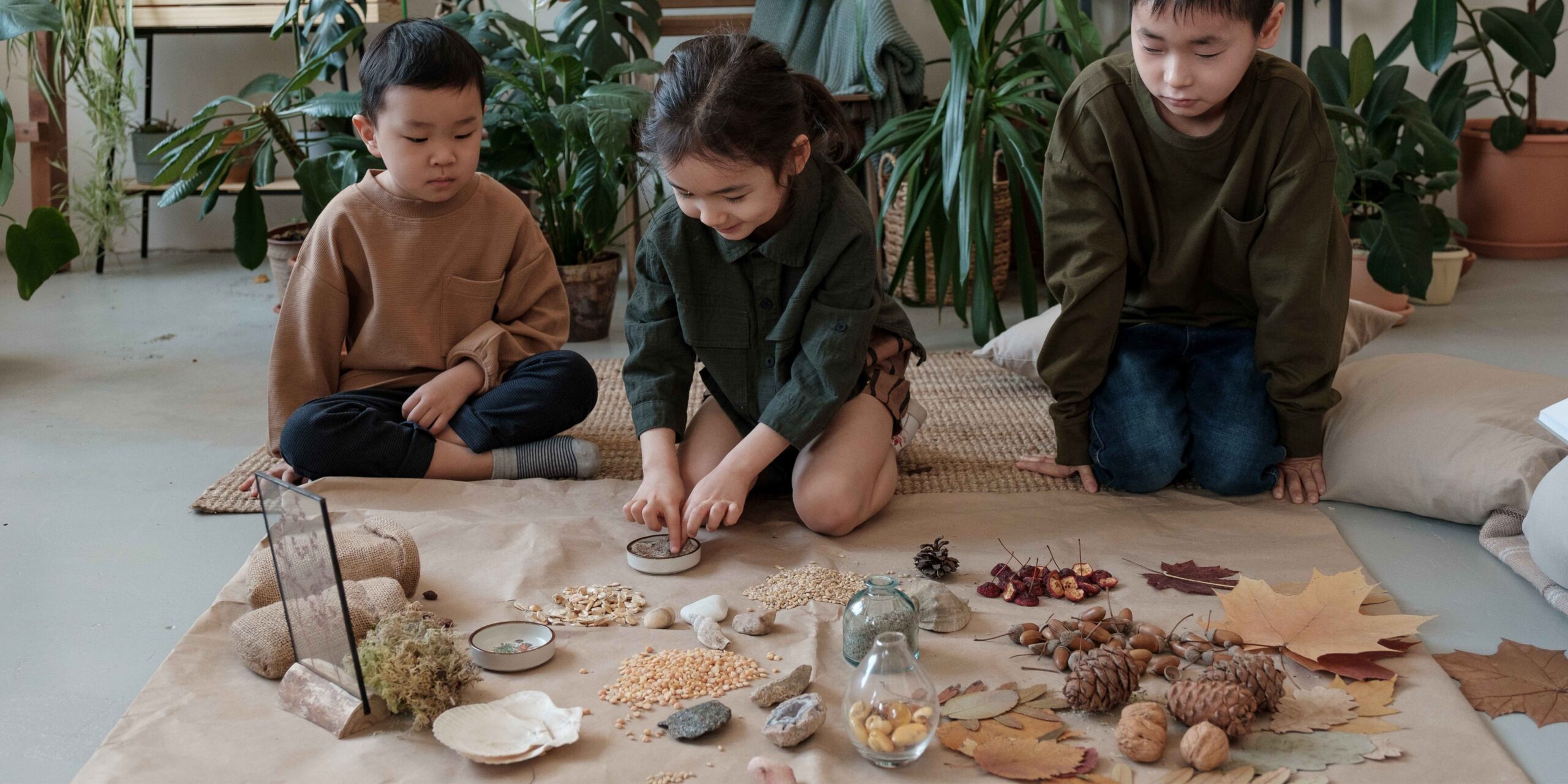This post may contain affiliate links. We may earn money from products we link to in this post.
Loose parts play is an excellent technique to stimulate children’s imaginations, develop problem solving, and empower them to direct their own play and environments. Any items that can be moved, carried, built and disassembled, lined up, stacked together, and tinkered with are considered loose parts.
If you’ve never done it before, introducing loose parts play can be a little frightening.
Parents, children, and the environment have all been noted as being impediments to implementing loose parts play.
Worry of children being hurt, misunderstanding the difference between risk and hazard, not knowing how to facilitate unstructured play, and fear of being criticized by other parents for allowing their children to participate in ‘unsafe’ activities are some of the parental hurdles.
Children may be wary of child-led, dangerous, unstructured play, be unfamiliar with outdoor play, or be overburdened with structured activities that leave little opportunity for spontaneous play.
Finding a safe outdoor location where children can play freely and openly may appear difficult, but all you actually need is a little space and some imaginative play elements.
If you want to do loose parts play outside, seek for a setting with some variety – trees, rocks, stumps, hills, sand – to expand opportunities for play without the need for additional equipment. You may also set up loose part play indoors; just make sure there’s enough room to walk about and that the materials you use don’t damage the space.
Consider the style of play you want to create when gathering items for your loose parts play.
Some things, including as blocks, wood, PVC pipes, and tools, are more suitable for construction play, while others, such as cloth and boxes, are better suited for imaginative play.
All materials must be lightweight enough for youngsters to move, carry, handle, and tinker with. Craft supplies, old tires (with assistance), large spools of thread, natural materials, wood, foam, pots and pans, buckets, rope, and tape are all excellent materials.
You should also consider the materials and the time of year – cardboard is great but can be highly slippery on snow, while some metals or black plastic might be scorching to the touch in the summer.
It is possible to gather materials by looking through your own garage or recycle bin, or by asking friends and family. You can acquire further information by contacting local recycling or waste removal facilities, furniture manufacturing or automobile companies, fabric and craft stores, or hardware stores.
Most synthetic materials used in loose parts play, such as buckets, tires, and PVC pipes, can be left outside with little risk of deterioration from the weather. Softer materials, such as cloth and cardboard, will need to be stored in an airtight container to avoid mildewing when exposed to water, humidity, or snow.
Is it possible to have a potting shed outdoors or storage room inside if you run a loose parts play at a school? Other possibilities for loose components storage include play boxes, plastic tote bins, and more permanent storage containers such as sea cans.
Sorting through the play items on a regular basis is an excellent habit to develop to ensure that there are no broken or sharp pieces, that nothing is rotting from the weather, and that the play box hasn’t become a dumping ground for non-play stuff. You can also change up the materials to encourage additional creativity and play.
If you’re new to loose parts play, the best thing to do is get right in and start exploring. Sort through the room, pick up and place items, begin stacking or putting things together, begin constructing and creating, and see where your imagination leads you.
If you want to encourage youngsters to engage in loose parts, you can set a good example by playing yourself and enlisting the children’s assistance. You can ask them things like, “What do you see?” “What do you want to build?” “What do you believe you’ll be able to make with those pieces?”
Allow the children to direct the play and build whatever they want; avoid telling a child what you think their creations are (for example, “I like your pirate ship”) and instead ask them what they have constructed. Encourage them to tell you how they got the idea and what their next steps will be.
Children are naturally incredibly creative, and they thrive in circumstances where they may direct their play and create to their hearts’ delight. Set up the loose pieces playscape as described above and watch the magic happen!

